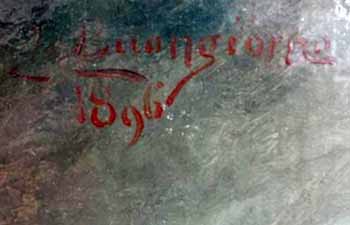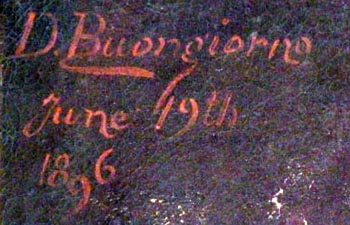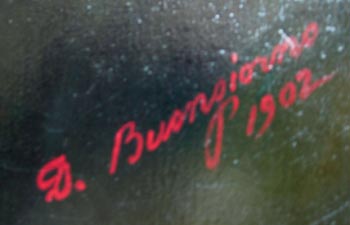Written Notes
Fronts
Near his signature, Buongiorno added dates to some paintings. I believe this indicates that they were commissioned paintings. On paintings that were gifts, he wrote inscriptions. Below are some examples of inscriptions on the fronts of paintings.
Click on pictures to see full paintings.
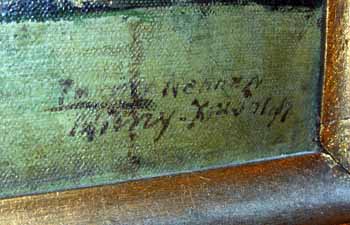
Given by Donatus Buongiorno as a gift to a family member, the inscription on this painting reads "To my nephew Mimi - Xmas 1907." See full painting.
Backs
Buongiorno wrote notes on the backs of some paintings in black crayon. Besides his initials (“D.B.”), there are often numbers. I think they were dates, prices or the numbers of paintings in an inventory for a show or sale.
Sometimes he wrote inscriptions on paintings which he gave as gifts (on the fronts or backs).
Occasionally, an easel painting has notes written on its stretchers, but these may have been added by various owners over the years.
Below is an assortment of notes on the backs of paintings.
Do you know what these notes mean? If so, I would love to hear from you. Contact me here.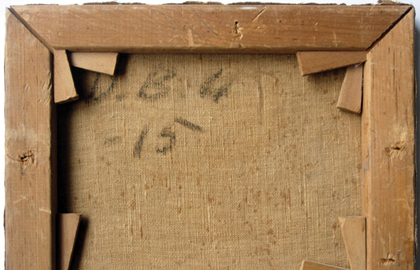
“D.B.” are the artist’s initials. I think “4” may be an inventory number and “-15” the price (US$15), suggesting this painting was placed in a group show or sale which required keeping track of inventory.
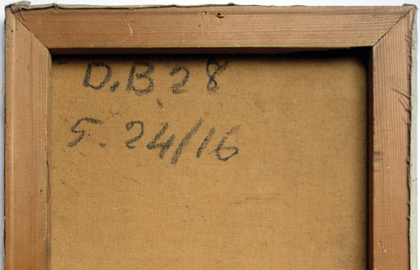
“D.B.” are the artist’s initials. I think “28” may be an inventory number which, suggesting this painting was placed in a group show or sale which required keeping track of inventory. (If it is, I would love to hear from anyone who has numbers 1–3 and 5–27!) What is “5-24/16?” A date—May 24, 1916? A price?

The inscription on the back of this painting reads “J. E. Mohr” and on the stretcher it says “July 20, 1933.” Does anyone know what this means?

I don't know what “22” on the back of this frame means: An inventory number? A date—1922? A price—$22? Since I think this painting dates to 1915–1917 because of its commercial stretchers, I don't think “22” is a date.

This inscription helped me identify that Buongiorno worked in Indianapolis for Giovanni Gioscio, another Italian immigrant religious mural painter. When I learned that the Indiana Historical Society had Gioscio’s business books in its archives, a helpful librarian plowed through them for me and discovered what Buongiorno was paid for his work—$594.86 in 1910.


